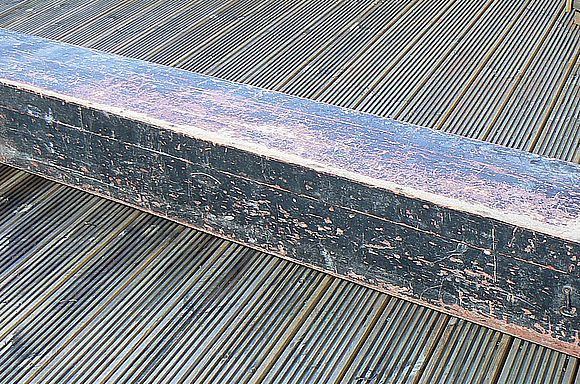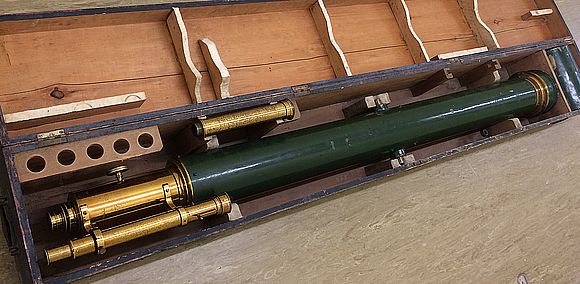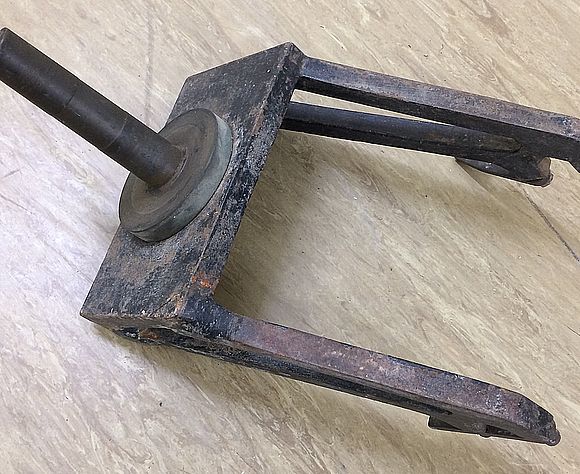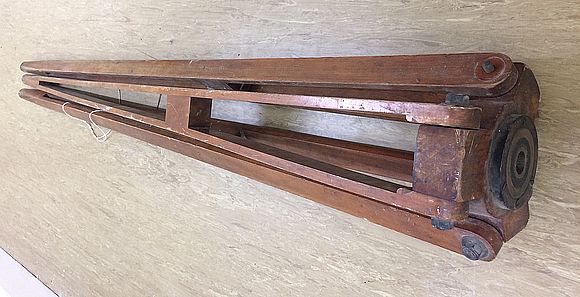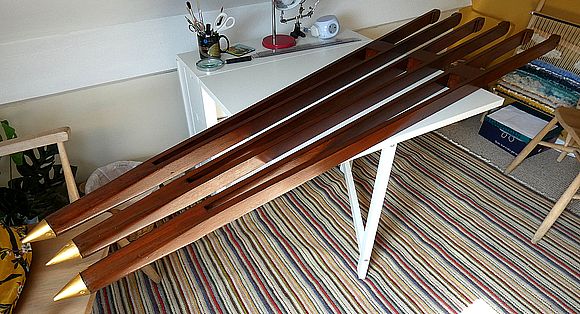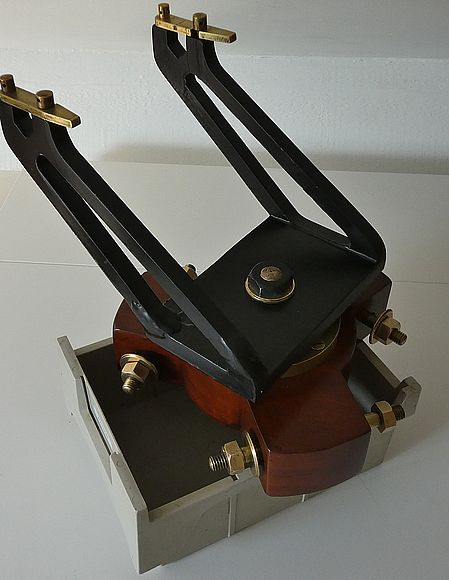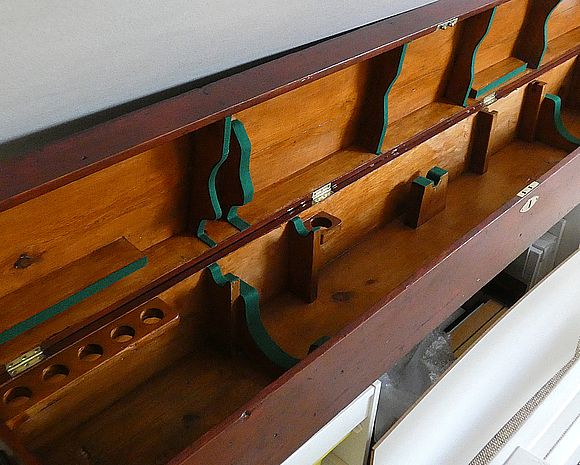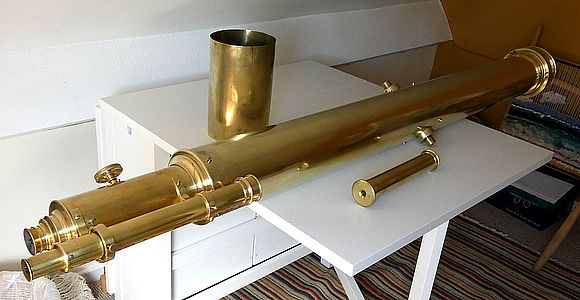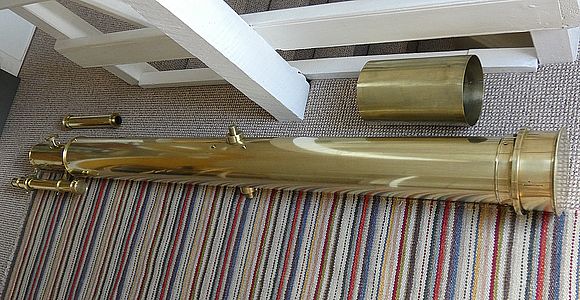In September 2018, Fyling Hall School announced that it was looking for a buyer for a vintage refracting telescope donated to them in the past. Too heavy and unwieldy to be of practical use, the school wanted to generate funds that could be better used elsewhere. Mark (Dawson) from the astronomical society knew of the telescope from a past visit. He went to see it again, and from photographs he showed me I decided to buy and restore it myself. Negotiations were made via Ayd Instone, Head of Physics, and the telescope was secured in the November along with as much provenance as could be gathered.
The old trunk in which the Watson refractor was stored. All images by Phil Richards.
(Click for full image)
The telescope is a 5-inch “Century” model manufactured by W. Watson and Sons of High Holborn, London about 1905. Watson made optical instruments of all kinds, including refracting telescopes with objectives between 3 and 9 inches. This example was in a neglected state, having been stored in a loft at the school for many years. The tube had been painted green and the exposed brass work lacquer was pitted. The supporting structure had suffered a collapse during use, causing breakage of some of the woodwork of the tripod and mounting boss, as well as to the steel yoke which had been re-welded. The carrying case was dirty, scuffed and splashed with paint. One original eyepiece had survived, but subsequent attempts to locate anything else at the school proved unsuccessful.
It was a busy time and the telescope remained in storage until restoration could start in September 2022, finishing in August 2023. It began with help from a skilled neighbour who made seamless repairs to the damaged woodwork, matched with old mahogany. He also made identical replacements for the odd missing bolt. The tripod legs and mount boss were stripped of old varnish and recoated. The brass, possibly bronze, components of the mount were polished, and the steel yoke stripped, primed and repainted in original black.
Attention next turned to the huge carrying case, the exterior of which was stripped and recoated to a mahogany finish without attempting to heal the scars from its long life. Internally it was cleaned and coated to an antique pine finish. As with the tripod and mount, a total of five coats of wood stains and varnishes were applied to give authentic shades and finishes. The felt linings of the internal supporting surfaces were replaced with good quality green baize. The brass and steel furniture were restored, and a local business found a key to fit the lock.
Finally, the main task was to restore the solid brass tube and attachments. These consisted of the tube itself, finder scope assembly, rack focuser assembly, extension tube, erecting barrel, dew tube and objective lens cap. All components were taken apart for treatment and reassembled. The many layers of paint and lacquer were removed, and the metalwork brought to a polished finish. Doing so required many hours using varying grades of steel wool and brass cleaners, burnished with rotary mops.
The objective glass cell and the eyepiece were left untreated except for cleaning the objective lens with meths. It was considered best to avoid disturbing these intricate surfaces and to preserve a hint of the original lacquer finish, which in these cases was in good condition. The objective cell is inscribed as being a 5-inch Watson-Conrady Mark III. Alexander Eugen Conrady was Watson’s scientific adviser and lens designer around 1901-1917 and the name itself was attributed to the telescope’s quality.
The Watson’s future is to be decided, with several options. Its size and weight make it unlikely that it can be displayed at home. It could be offered to Whitby Museum, since its provenance has several Whitby connections, but the museum is also short of space. It could be sold privately or at a specialist auction, and if not used for observing would make a statement piece in home design. In 2012 a similar 5-inch Watson “Century” sold at Bonhams in London for £8125 including premium. And finally, measurements have shown that the Watson is a good replacement match for the 5-inch Cooke refractor used by our astronomical society in the Bruce Observatory at Caedmon College.
The Watson restoration has been thoroughly enjoyable. It revealed the superb build quality, materials, and optical excellence of an instrument of its type and age. Hopefully its future has also been assured.
Phil Richards
I’m sure I will not be the only one who thinks Phil has done an absolute wonderful job restoring the telescope and mount. It looks superb, you would hardly believe it was the same instrument.
Mark Dawson
- Log in to post comments

